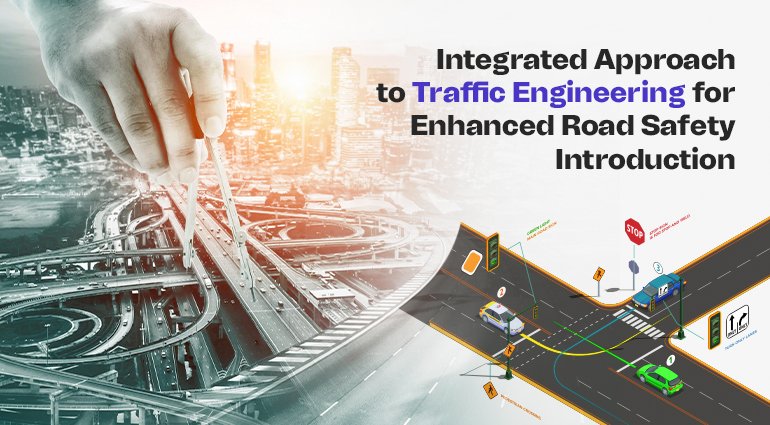Integrated Approach to Traffic Engineering for Enhanced Road Safety Introduction

Traffic engineering plays a pivotal role in shaping the safety and efficiency of road systems. As road networks continue to expand globally, the need for a comprehensive and integrated approach to traffic engineering becomes increasingly crucial. This article explores the interconnected relationship between traffic engineering and road safety, emphasizing the importance of adopting innovative solutions to address emerging challenges.
1)Understanding Traffic Engineering: Traffic engineering encompasses a range of disciplines aimed at optimizing the movement of vehicles, pedestrians, and cyclists on roadways. Key elements include traffic flow analysis, signal timing, road design, and transportation planning. Efficient traffic engineering not only improves the overall transportation experience but also contributes significantly to reducing the number of accidents and enhancing road safety.
2)The Role of Technology: In recent years, advancements in technology have revolutionized traffic engineering practices. Intelligent Transportation Systems (ITS) leverage sensors, cameras, and data analytics to monitor traffic patterns, predict congestion, and dynamically adjust signal timings. These technological interventions not only improve traffic efficiency but also serve as proactive measures to prevent accidents and minimize their severity.
3)Road Safety Challenges: Despite technological advancements, road safety remains a global concern. Factors such as distracted driving, speeding, and inadequate road infrastructure contribute to a significant number of accidents. Traffic engineering must evolve to address these challenges by incorporating design elements that prioritize safety, such as dedicated lanes for cyclists and pedestrians, improved signage, and intelligent crosswalks.
4)Human-Centric Design: An integral aspect of traffic engineering for road safety is the human element. Understanding driver behavior, cognitive abilities, and psychological factors is essential for designing roads that are inherently safe. Human-centric design principles can be applied to road infrastructure, signage, and traffic management systems to create an environment that aligns with the capabilities and limitations of road users.
5)Case Studies: Highlighting successful case studies from around the world where innovative traffic engineering solutions have significantly improved road safety. Examples may include cities that have implemented smart traffic management systems, redesigned intersections for better visibility, or integrated public transportation systems to reduce reliance on personal vehicles.
6)Future Trends: Explore emerging trends in traffic engineering that are poised to shape the future of road safety. This may include the integration of autonomous vehicles, the use of artificial intelligence for real-time traffic management, and the development of sustainable transportation solutions. Anticipating future challenges and proactively addressing them through innovative engineering practices is essential for creating safe and efficient road networks.
Conclusion: In conclusion, an integrated approach to traffic engineering is paramount for ensuring road safety in an evolving transportation landscape. By leveraging technology, understanding human behavior, and implementing innovative design principles, traffic engineers can contribute significantly to reducing accidents and creating roadways that prioritize the safety and well-being of all road users. As we look towards the future, continued collaboration between policymakers, engineers, and technology experts will be crucial to creating sustainable and safe transportation systems worldwide.



